A Migrant with South America in His Bones
Mississippi Kites hold sway with new and veteran bird watchers alike
We were searching for beauty just beyond our reach. We scanned the top of a tall Black Walnut tree with magnified vision trying to catch a glimpse of a warbler. I found the little gray bundle of energy in my binoculars at about the same time our volunteer bird walk leader started describing what he was seeing. “Gray back and wings, two wide faint wing bars, snakelike foraging style, and orange legs. That is a female Blackpoll Warbler.” I was stunned. At this point, I had a general impression of the bird but was nowhere near a confident identification. His quick identification of a small, fast-moving bird obscured by leaves was a beautiful thing to behold, and it highlighted one of the appealing aspects of birdwatching; it is completely open-ended. There is always more to see, learn, and appreciate.
Having an expert birder and professional bird guide lead your local Audubon Society bird walks makes for a great learning experience. Our guide's ability to recall and parse out very fine acoustic and visual details was amazing. He was identifying birds by brief glimpses, flight calls, and snippets of distant songs that many of us did not even notice. I found this to be inspiring.
At this point in our bird walk, we were aware that almost any bird that came near us would probably be seen and identified. That is a thrilling feeling. This group of experts, regular birders, and novices were all held in that dynamic tension. We were like one organism with finely tuned collective senses.
We did not have much time to appreciate the warbler before someone called out “Cooper’s Hawk way up in the sky above the canopy. He is crossing the thin line of white clouds heading east.” Our attention turned to the sky. The Cooper’s hawk was performing a display flight; it was a mere spec against the sky, but we could find it in our binoculars and see it flapping against the blue. A few minutes later, a subtly different tiny silhouette appeared. It was quickly identified as a Mississippi Kite. The entire group was appreciating this high-flying bird when we noticed a flash of movement in the canopy as a juvenile Mississippi Kite flew right over our heads and circled above us.
Our voices were simultaneously hushed and raised as people exclaimed, gasped, and pointed at the kite, which suddenly became very vivid. He moved with an otherworldly fluid grace as he floated, banked, and circled above us using his long agile tail as a rudder. He floated in and out of the shadows and occasionally caught the morning sunlight, which illuminated the intricate patterns and colors in his plumage.
He was like a divine conductor from another realm, and we turned and swayed in unison as we followed him through the sky with our binoculars. When he drifted away behind the trees, we felt that unity persist. We had participated in a shared experience, and we were changed; the bird had given us a gift. We were focused and held under his sway for a few moments in which nothing else existed but blue sky and refined grace in motion.
As soon as the kite disappeared, our guide started showing people images of Mississippi Kites and telling them how he saw one perched in a tree in the park the day before. I watched one of our new birders absorb that fact along with the images of the birds. She looked at the guide, paused, and with a face that radiated joy exclaimed, “I am coming here every day.”
Our ensuing conversations raised a few questions. Who was this migrant with South America in his bones? Why was he here? And could he make a home with us in our community? Mississippi Kites are one thread in an interwoven tapestry of life that is beckoning us to allow diversity to emerge. They are part of a growing number of beings that are shifting their ranges northward as our climate warms.
We were a shifting assemblage of people, a mixed flock observing a mixed flock. People and birds were in flux, on the move, separate and yet together, unified by our presence in this tiny green oasis hidden in a landscape that lay in capitalist ruins. Maybe these ephemeral moments of beauty should be at the center of things, the center of our awareness, priorities, and sense of reality. This kite was showing us how to look around rather than always looking ahead.
Are the precarious lives of birds so different from our own? Perhaps precarity is the defining feature of the unpredictable times we live in. These birds are responding to changes in their environment by shifting their ranges. They are modeling the changes we need to make in response to our shifting conditions. Our little band of birding misfits was on to something. We were forming new alliances and more complex relationships with each other and with the land.
Birders are great people to hang out with. The moments of grace, wonder, and beauty you experience brings people together and get us all thinking about how we can have more of this in our lives and community. How can we manifest beauty in the world? Can I work together with these people that are standing around me to do this? I think so. I think it is happening right now. It is catalyzed by the gleam of a kite banking in the sun, so graceful and beautiful that people gasp with delight.
Birding in a group is also a place where your vulnerabilities get exposed; little windows are opened into nature and human lives. People can only look straight up for so long before sore necks and backs limit the time spent scanning trees. Subtle comments hint at these limitations and then engender connection. Toward the middle and end of the walk, people have to depart for a variety of reasons that are often shared with the group, so even for introverts this is a time and place of connection. Now we know a little more about each other, our human frailties, and how precious life is.
Our bird walks are a place where connections and community are formed, and we develop constituents for the important work that we are doing. One of our key insights is that we need people that care about nature and enjoy it to speak up and share those opinions with community leaders. This is how we are improving the habitat for birds in parks in our town. We’re recruiting birders to engage in the planning process for parks and to let public officials know that they are passionate about the issue and willing to dedicate themselves to the cause. We have to care as deeply about our cause as the people who advocate for sports and short grass. Otherwise, we are drowned out by the people that complain, and that leads to more mowing, concrete, and a diminishment of nature and natural areas.
Birdwatching is about love, beauty, fragility, and appreciating these stunning, resilient, and fragile creatures, which persist despite all the obstacles we put in their path, and this, increasingly is what people need to do to find ways to persist, despite the challenges the world places in front of us. We are not so different from the birds in this regard. We are all making our way in the world as best we can; the more we help them, the more they will help us.


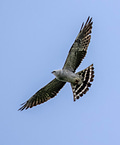


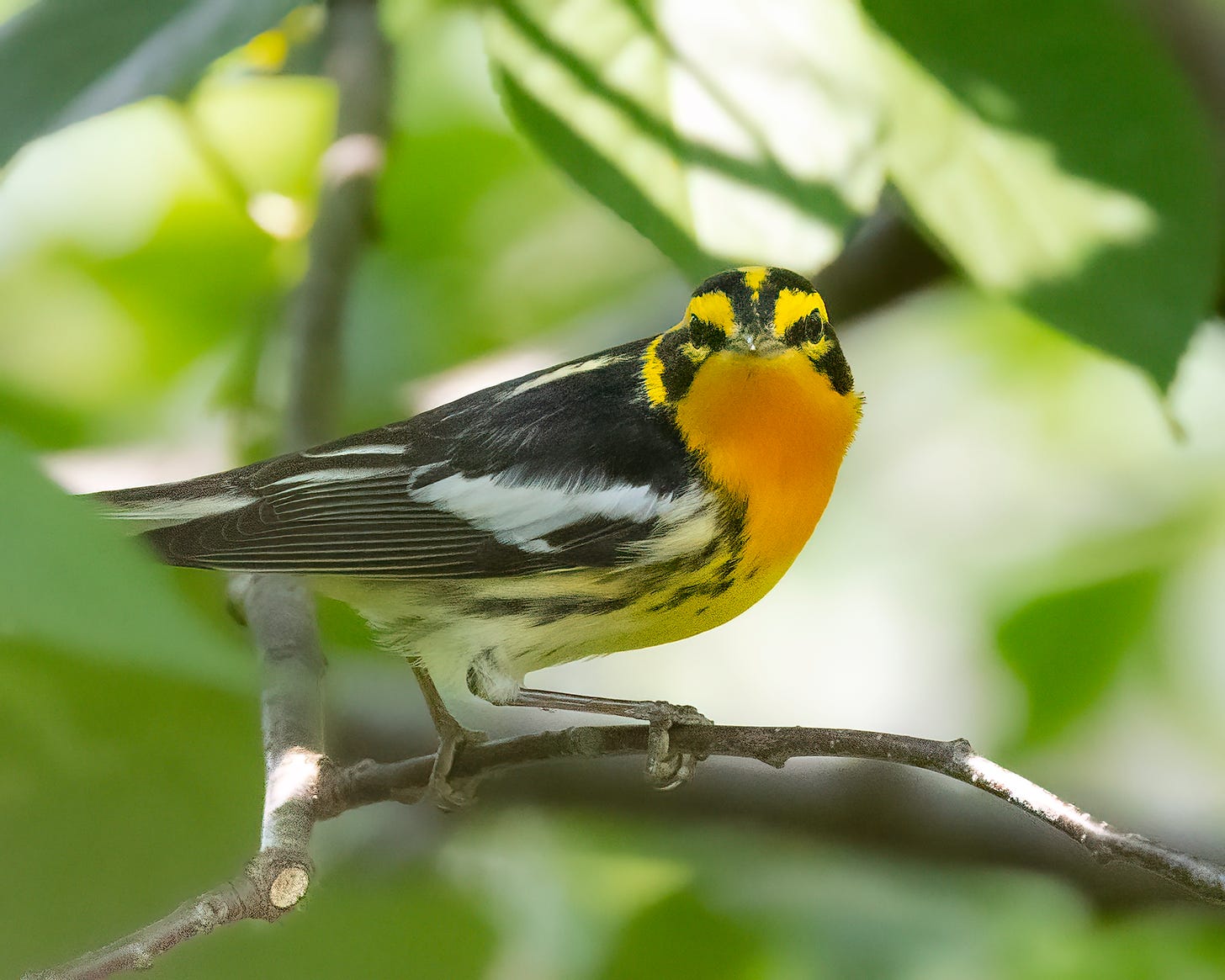
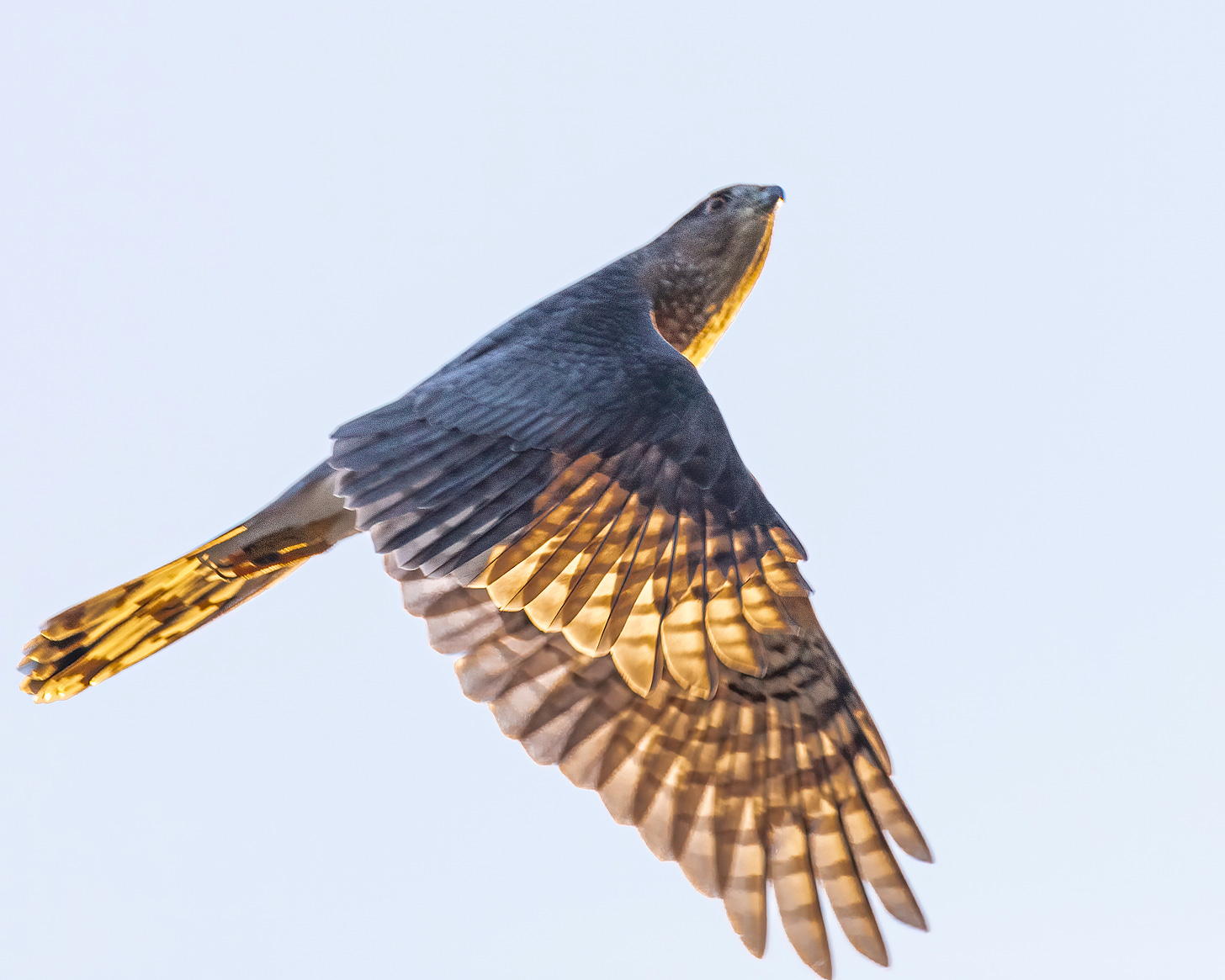
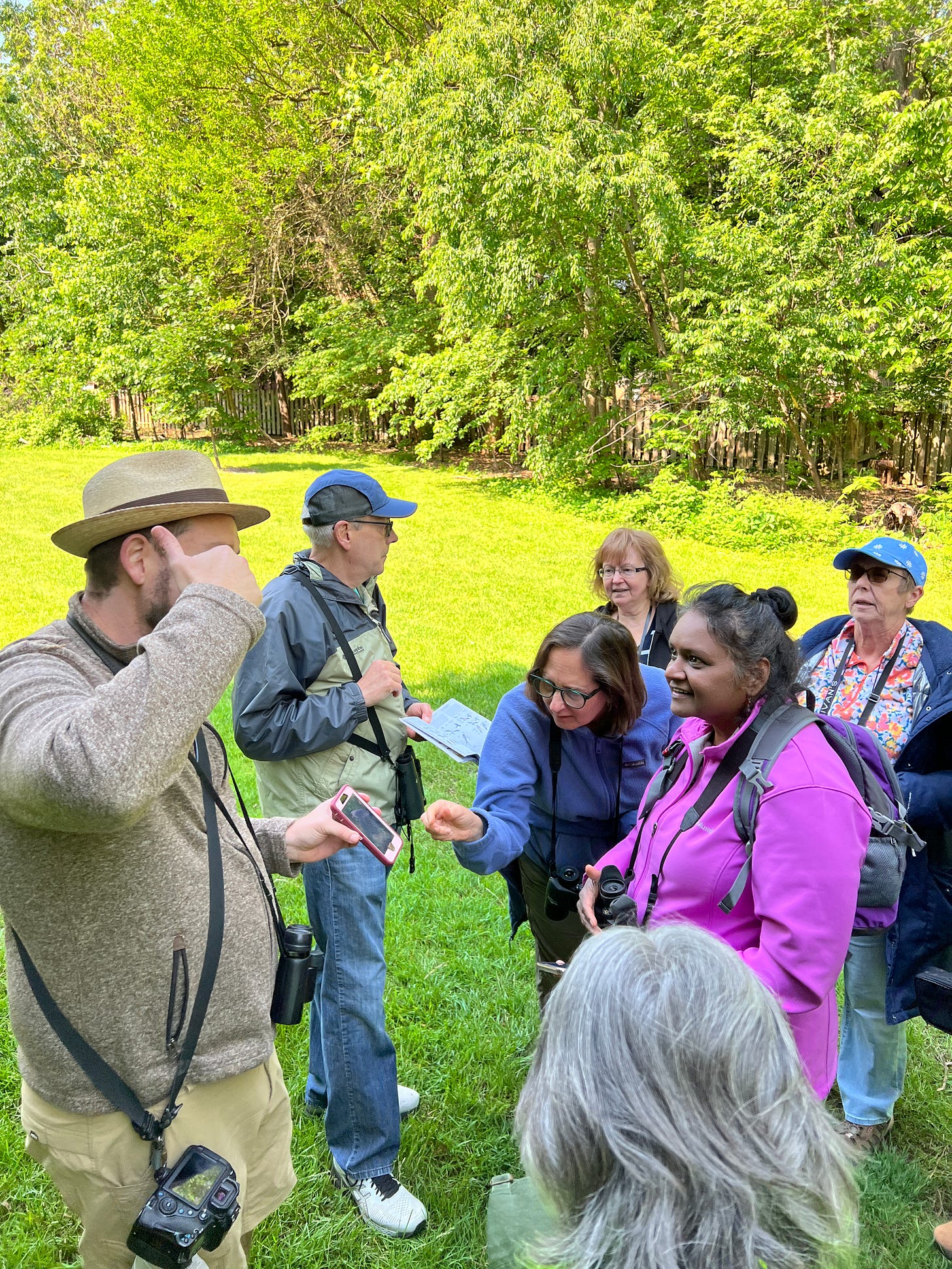
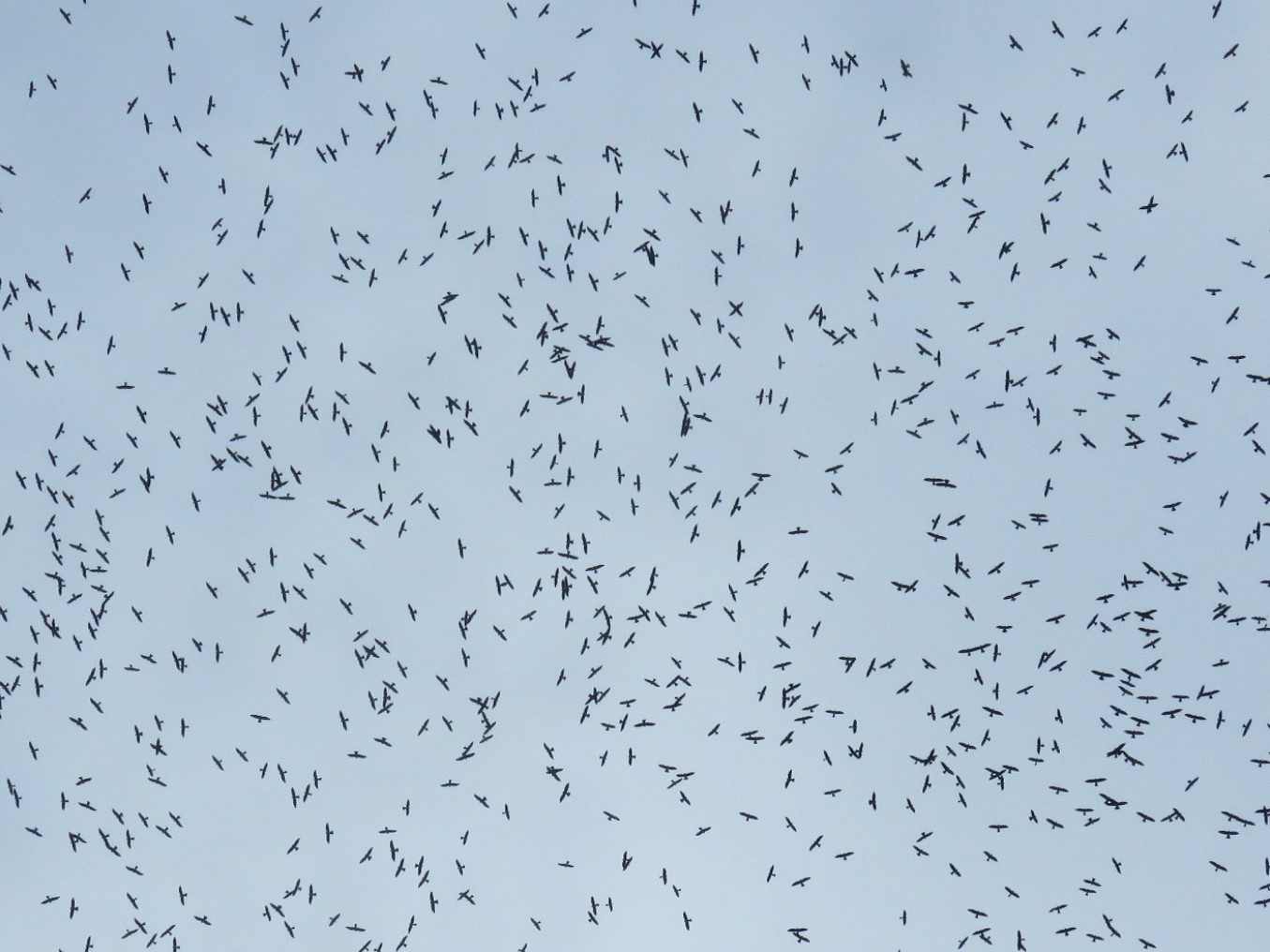
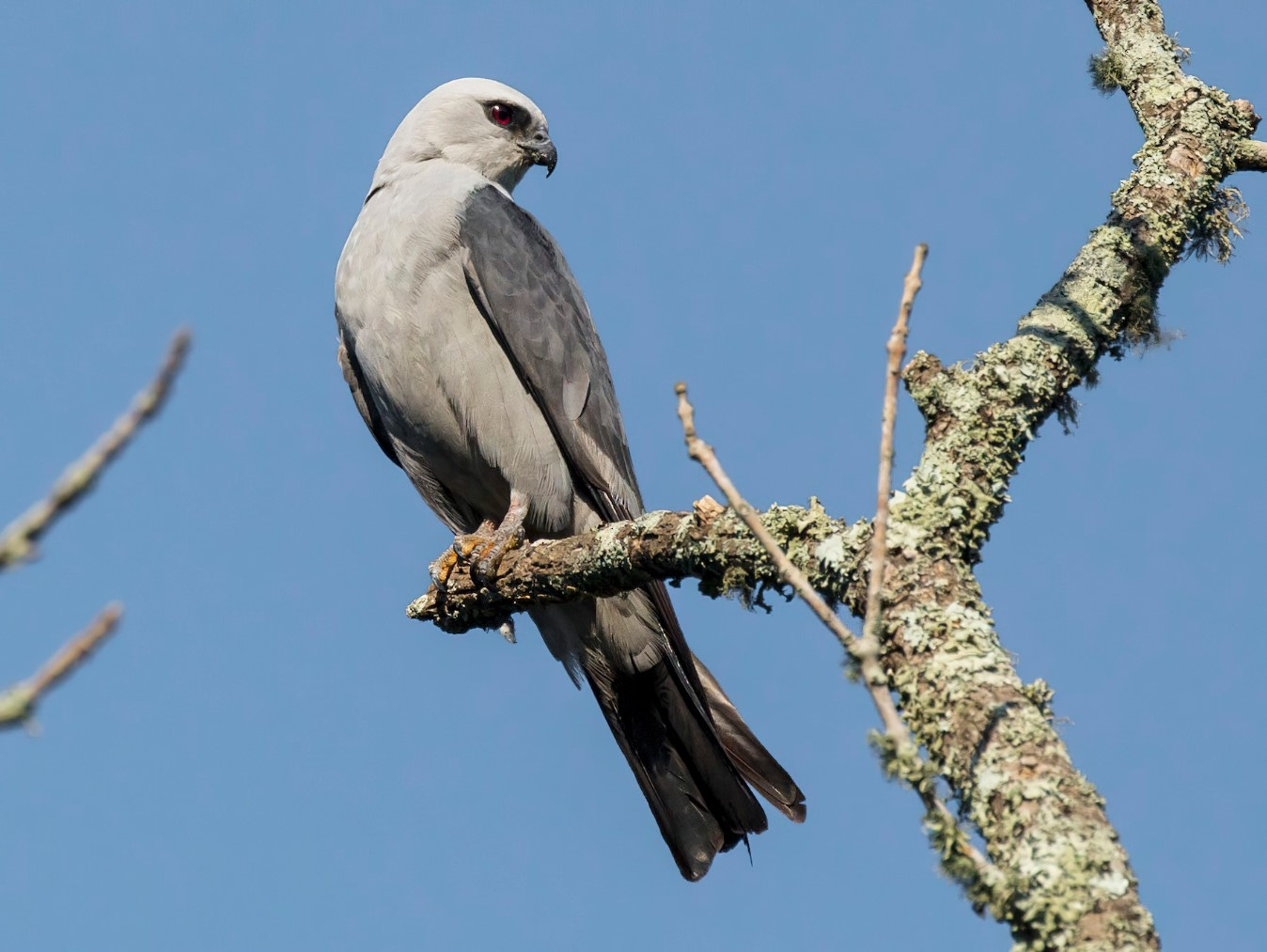
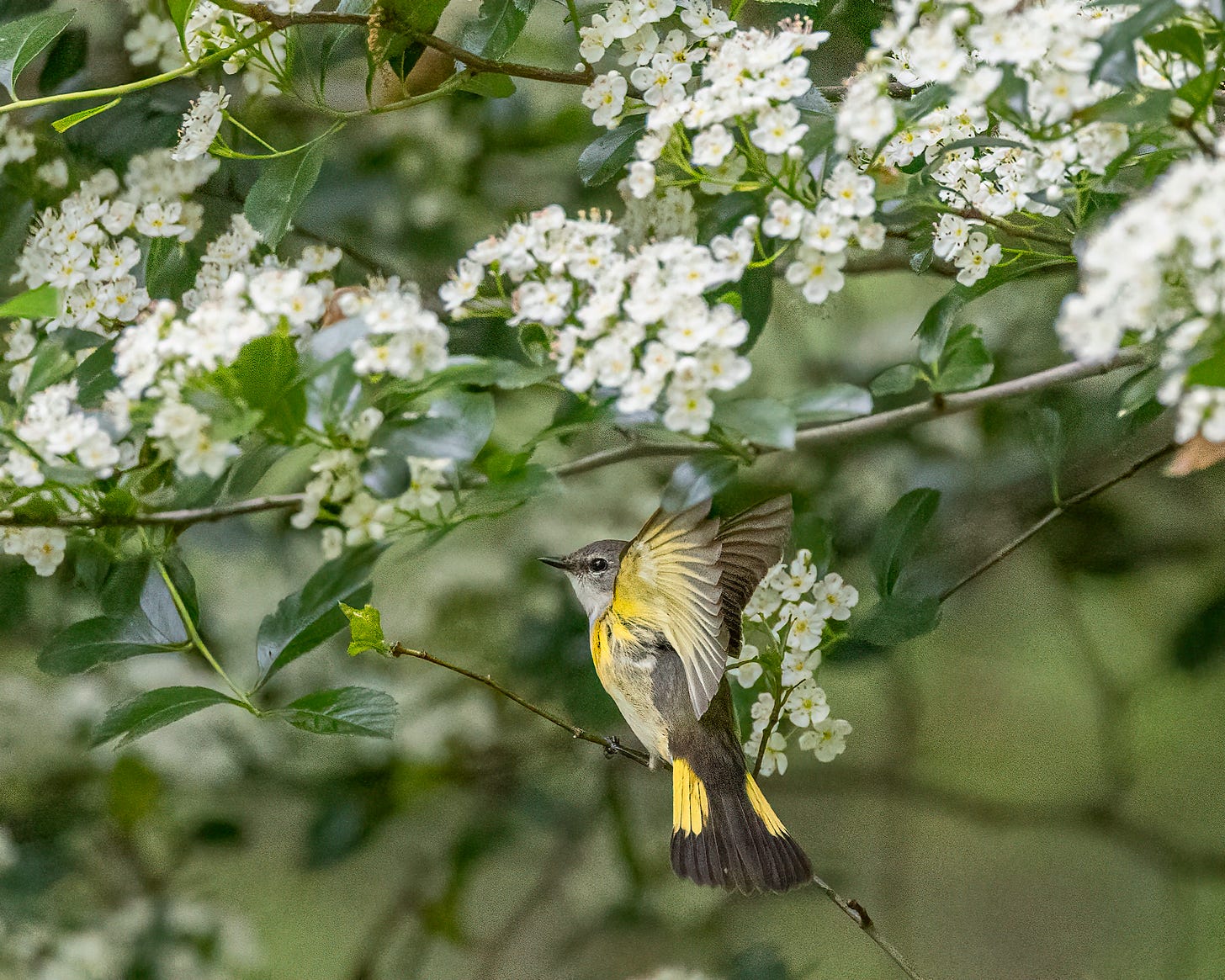
I have gotten 3 people at church and my sister to put the Merlin Bird ID app on their phones. My grandson and I sit on the deck every Tuesday and Thursday morning with our Merlin ID and our binocs for at least 1/2 hour. (He is 18 months old. Never too young to learn).
Such a beautiful and inspiring essay on joining a group to look at birds! I would encourage anyone who has never done a bird walk to give it a try. I did my first walk in a very long time this week. The guide was able to hear the birds around us and identify them by sound so we knew what to look for in the trees, and even if a bird didn't show itself (I'm talking about you Mourning Warbler) the guide was there to show us a few pictures on the phone. Hopefully someday I'll see a Mississippi Kite. But for now I'll settle for these gorgeous photos.